How a sculptor from a remote Buryat village became a global sensation (PHOTOS)
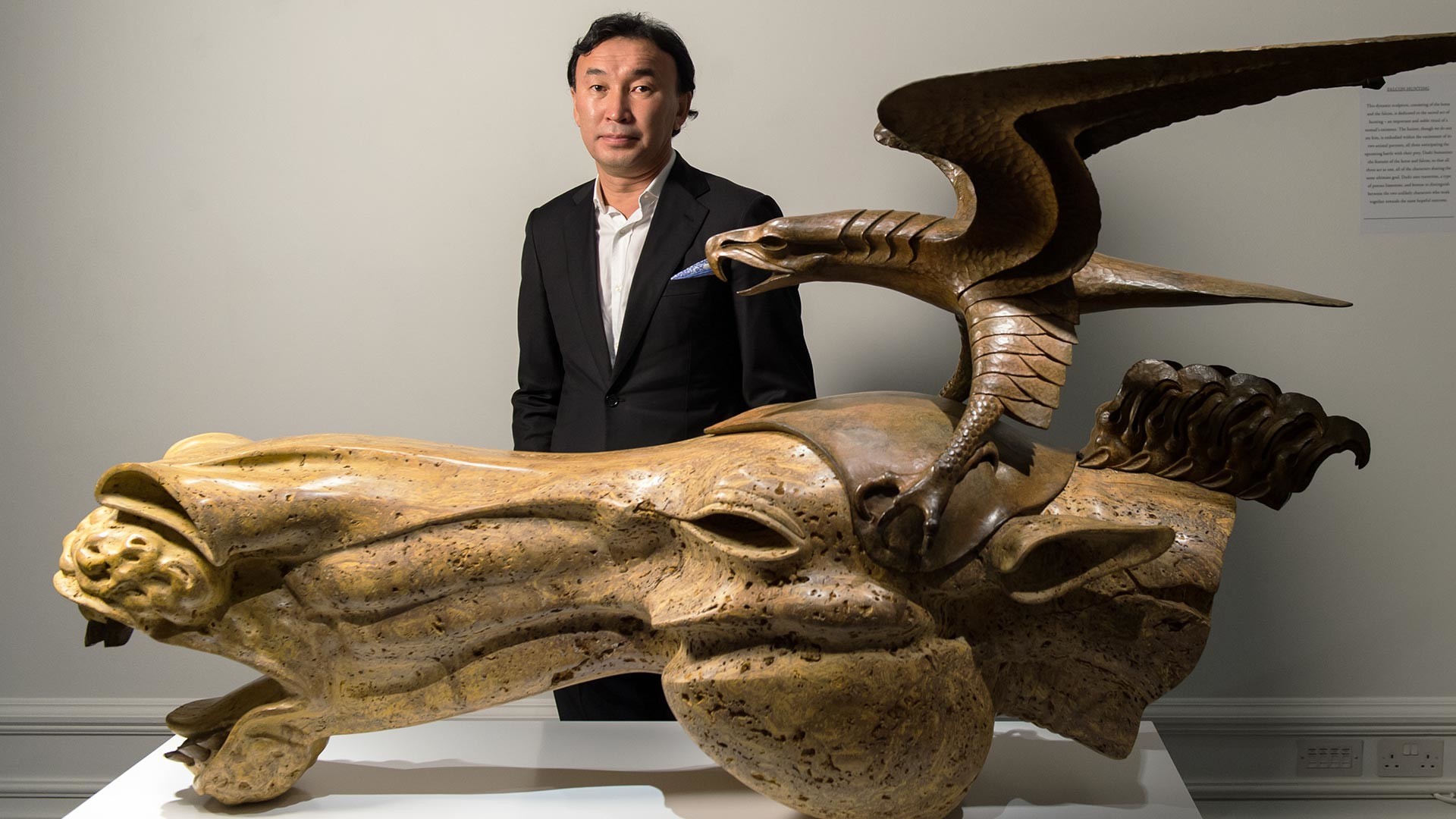
Dashi Namdakov opens his solo exhibition 'Between Heaven & Earth' in London, 2014
Ian Gavan/Getty Images for Halcyon GalleryThe artist’s name, Dashi Namdakov, translates from Buryat as “lucky sun”: His ancestors believed that there is a sacred bond between a person’s name and their fate. As a child, Dashi fell seriously ill and doctors said they were unable to help him. The desperate parents took the boy to see a female shaman. She did help, but said that the child’s illness was the price paid for breaking ties with nature. Already on the following day, the boy had completely recovered and, since then, he has not once lost touch either with nature or with his roots.
From a Buryat village to London
Dashi inherited his artistic talent from his family, which has many craftsmen in it, and from his father, who was a famous Buryat artist. “I got my love for art from my ancestors and my parents. They are, first and foremost, hard workers, capable of constantly learning new things. And they had a large family to raise. This is how our family developed this propensity for crafts and creativity, I think,” Dashi says.
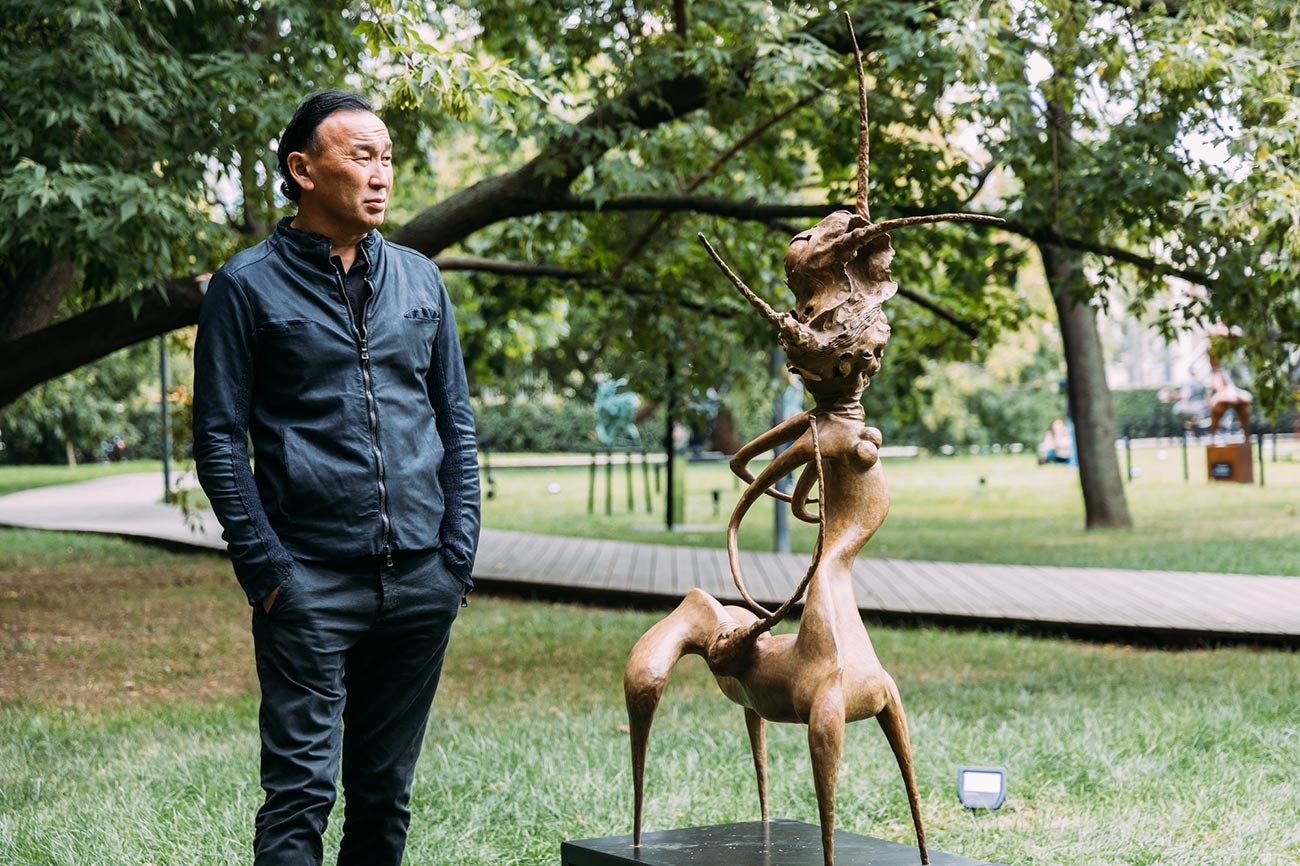
In his native Buryat village, Dashi soaked up ancient Buddhist legends about fabulous creatures, mysterious spirits, the elements and forces of nature. It is, therefore, not surprising that it is they who feature prominently in his works.
Later, he went to study in Novosibirsk, then in Krasnoyarsk and later still moved to the capital of Buryatia, Ulan-Ude, and started a family. Dashi's path to recognition was not easy: he worked as a jeweler and used the proceeds to buy bronze and other materials for his sculptures. His wife did not object – as long as his creative potential was realized.
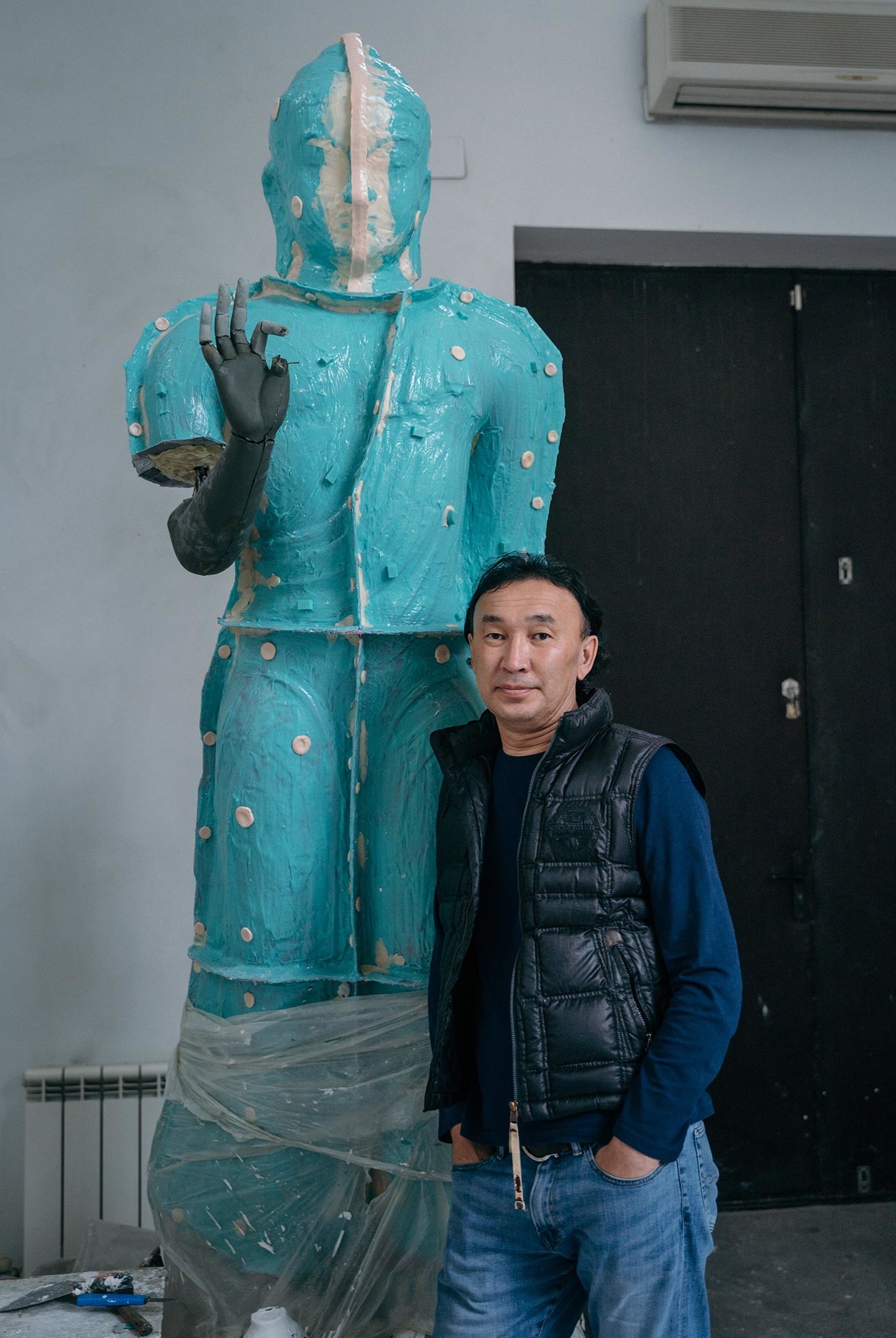
Dashi had his first solo exhibition in 2000 in Irkutsk when he was 33, followed by exhibitions of his sculptures in Buryatia and Mongolia. He got noticed and, in 2002, he was invited to take part in a group exhibition at the Central House of Artists in Moscow. Soon he moved to the Russian capital. A year later, he already had a solo exhibition at the Museum of Oriental Arts in Moscow. In addition, the sculptor was awarded the Silver Medal of the Academy of Arts. That marked the start of his international career, with exhibitions all over the world, from New York to Guangzhou.
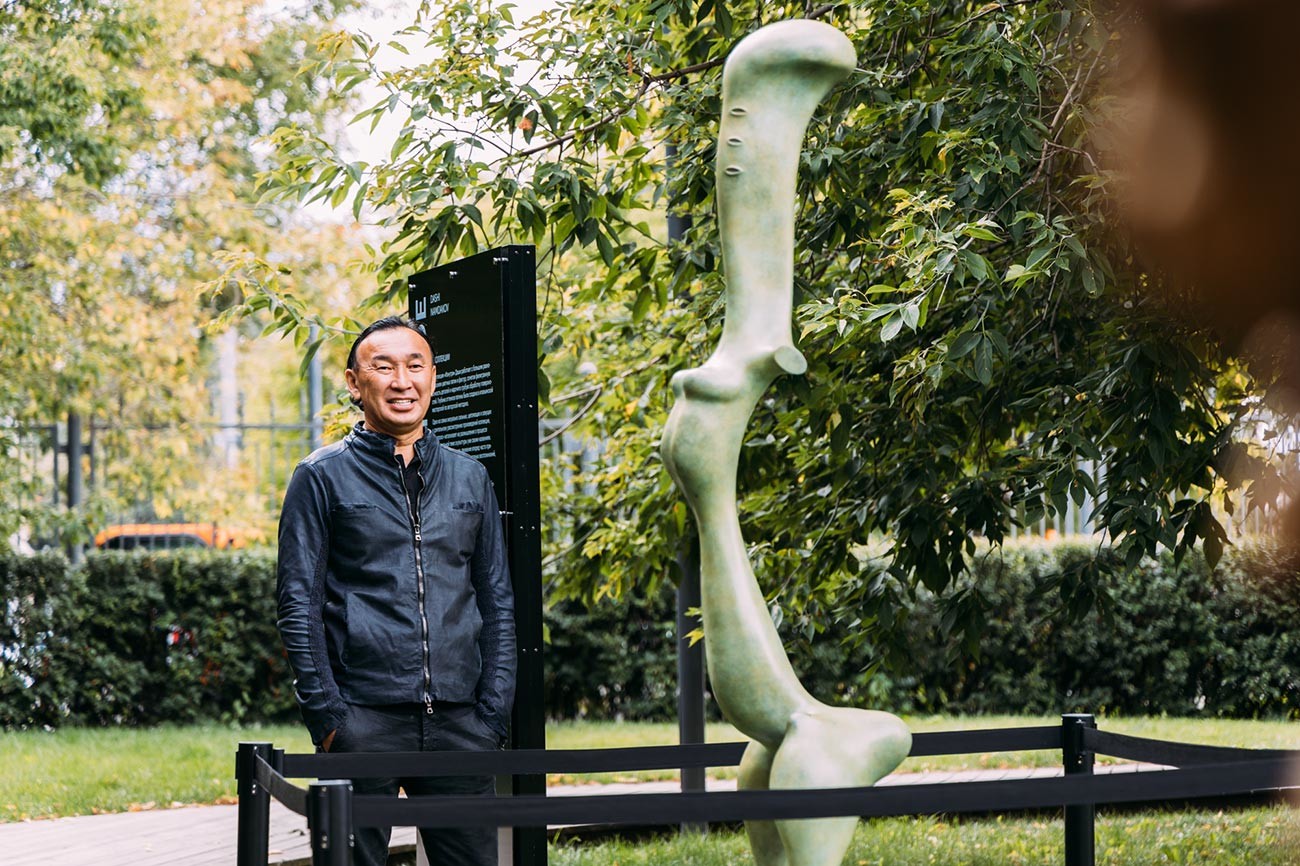
“I used to think that my art was interesting only to people from my region. But, it so happened that people in other places liked my works, too. I hope that my sculptures are of interest as something new and exciting,” Dashi says.
These days, Dashi’s works are on display at the Russian Museum of Ethnography, the Hermitage and many other museums around the world.
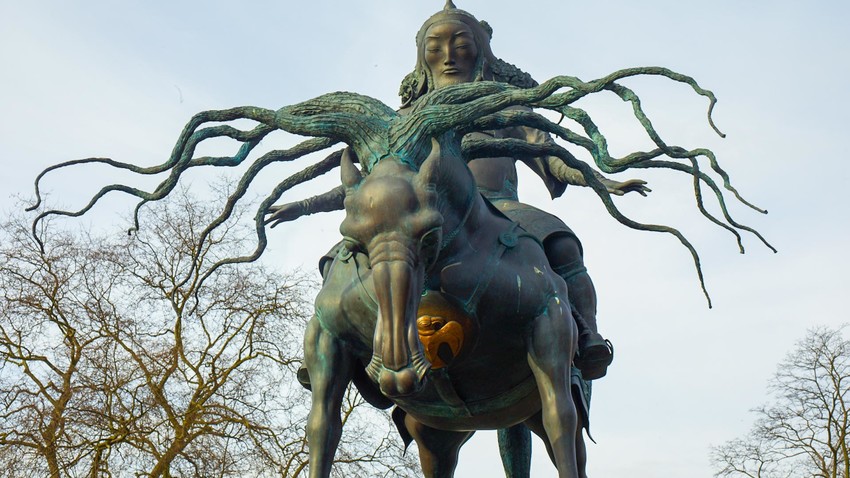
Dashi Namdakov's sculpture of Genghis Khan was on display in London’s Hyde Park for two years
Dashi Namdakov Art FoundationDashi’s creations will also grace a new station of the Moscow Metro, Novomoskovskaya, currently under construction.

One of Dashi’s favorite works is the sculpture The Royal Hunt in the Siberian city of Kyzyl, the capital of the Republic of Tyva. “Tyva is a land of amazing beauty, with such an ancient history that it takes your breath away,” says Dashi.
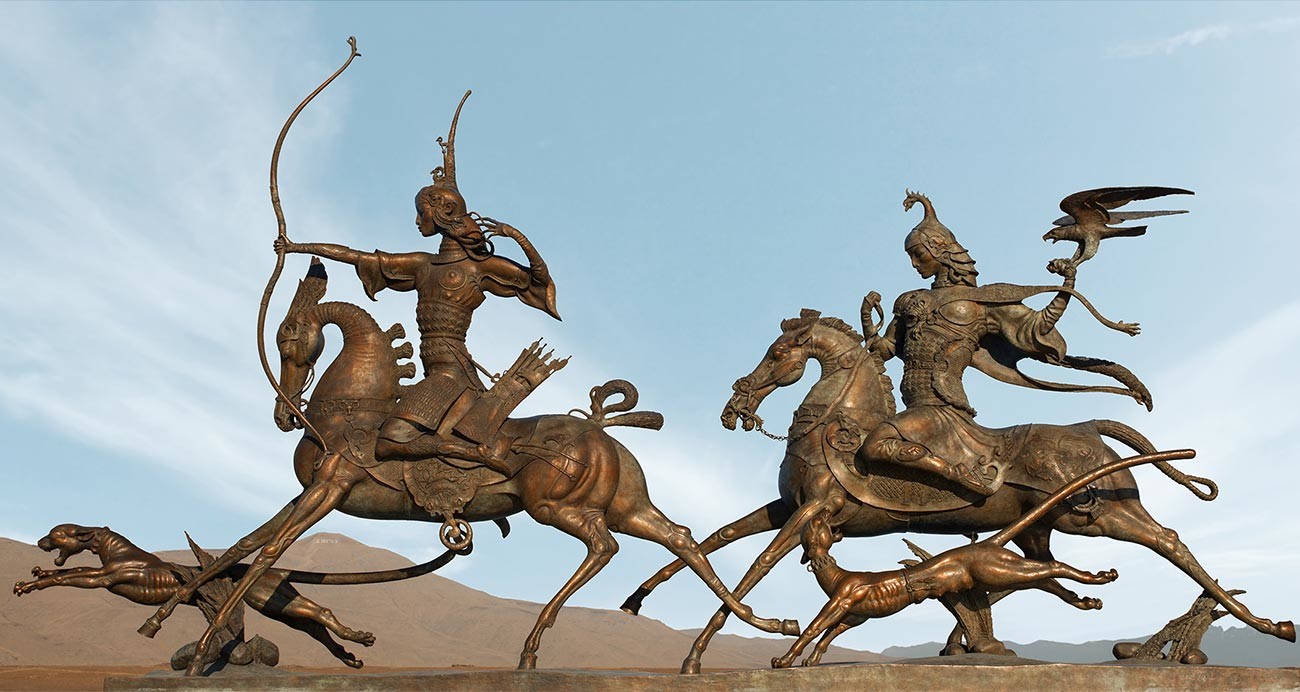
The Royal Hunt
Dashi Namdakov Art Foundation“I tried to convey the poetics of the ritual, recreating it not necessarily true to historical detail, but true to my imagination. The great river Yenisei runs nearby, surrounded by the Sayan foothills. The epic nature of it all is in the air there.”
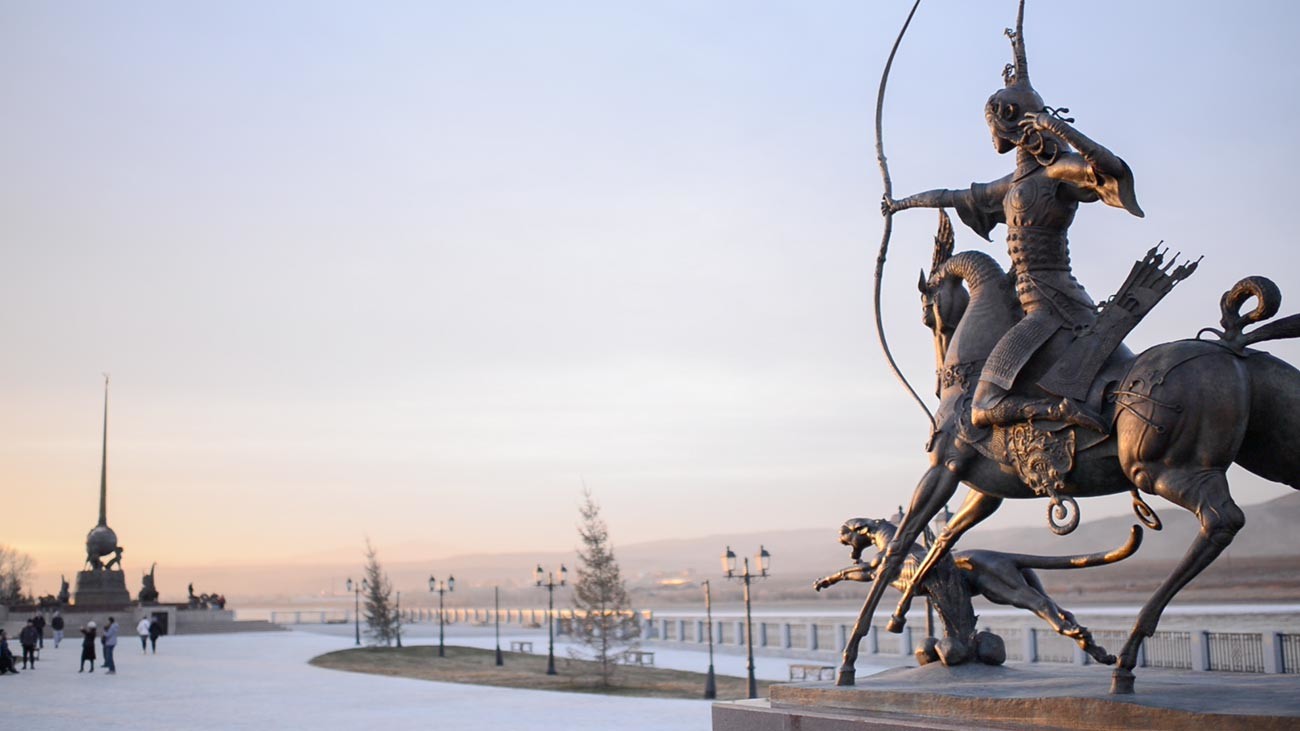
The Yenisei embankment in Kyzyl – The Royal Hunt. Further on, is another sculpture by Dashi, called Center of Asia.
Dashi Namdakov Art FoundationBack to the roots
Having traveled around the world and lived in Irkutsk, London and Moscow, the famous sculptor has returned to his native Buryat village.
“My homeland, the village of Ukurik in the Transbaikal region, has become deserted in recent decades and could have completely disappeared from the map, like many other villages. That is why my fellow villagers and I decided to revive it,” says Dashi.
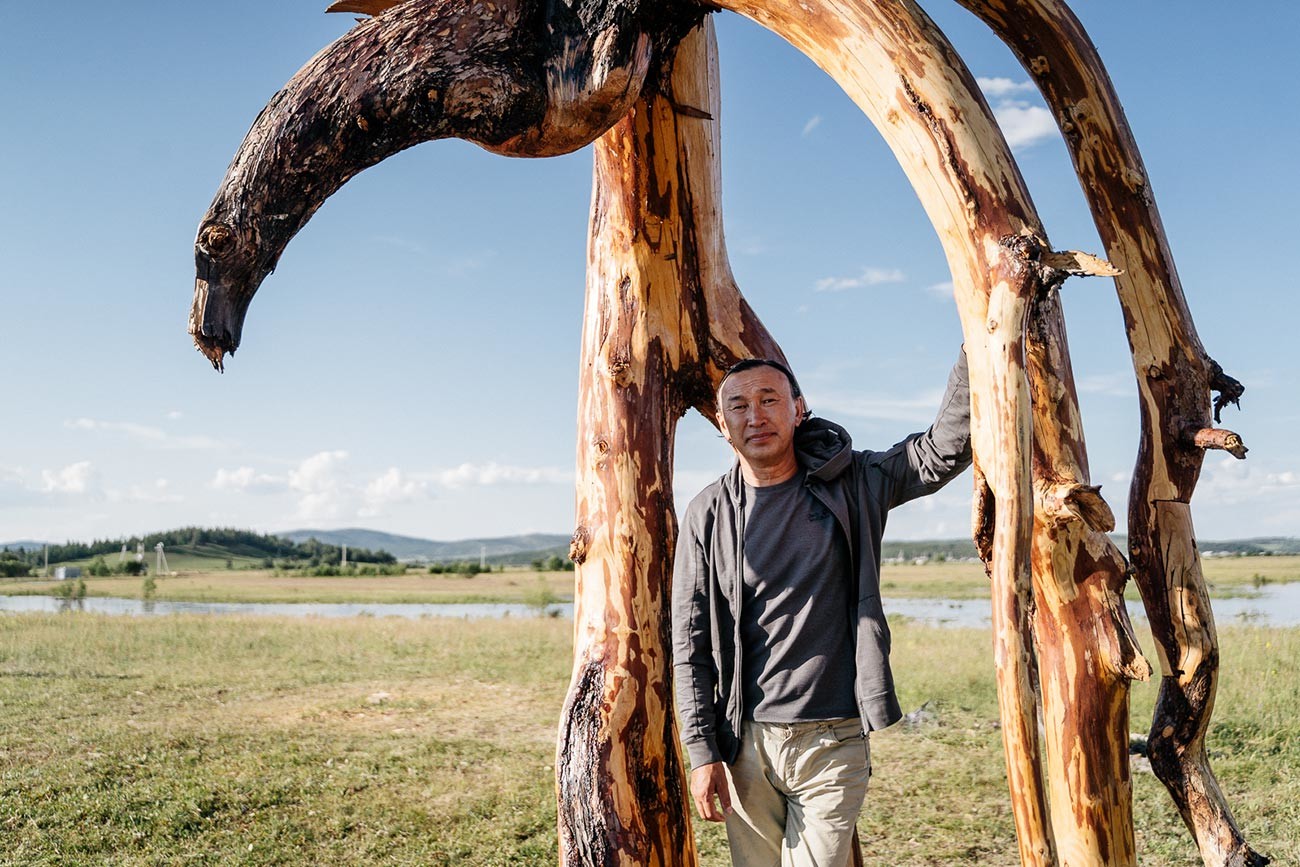
In August 2021, he opened his workshop here and set up a park of wooden sculptures called ‘Tuzhi’. Dashi’s plans include launching a tourist brand with the same name, which comes from the sarea, meaning “a valley of crafts” in Buryat.
In Tuzhi, he began to make wooden sculptures. “For me, this is a new challenge. The texture is different, you must preserve the nature of the trunk, find an image and convey it in harmony with the material. It is all very interesting.”
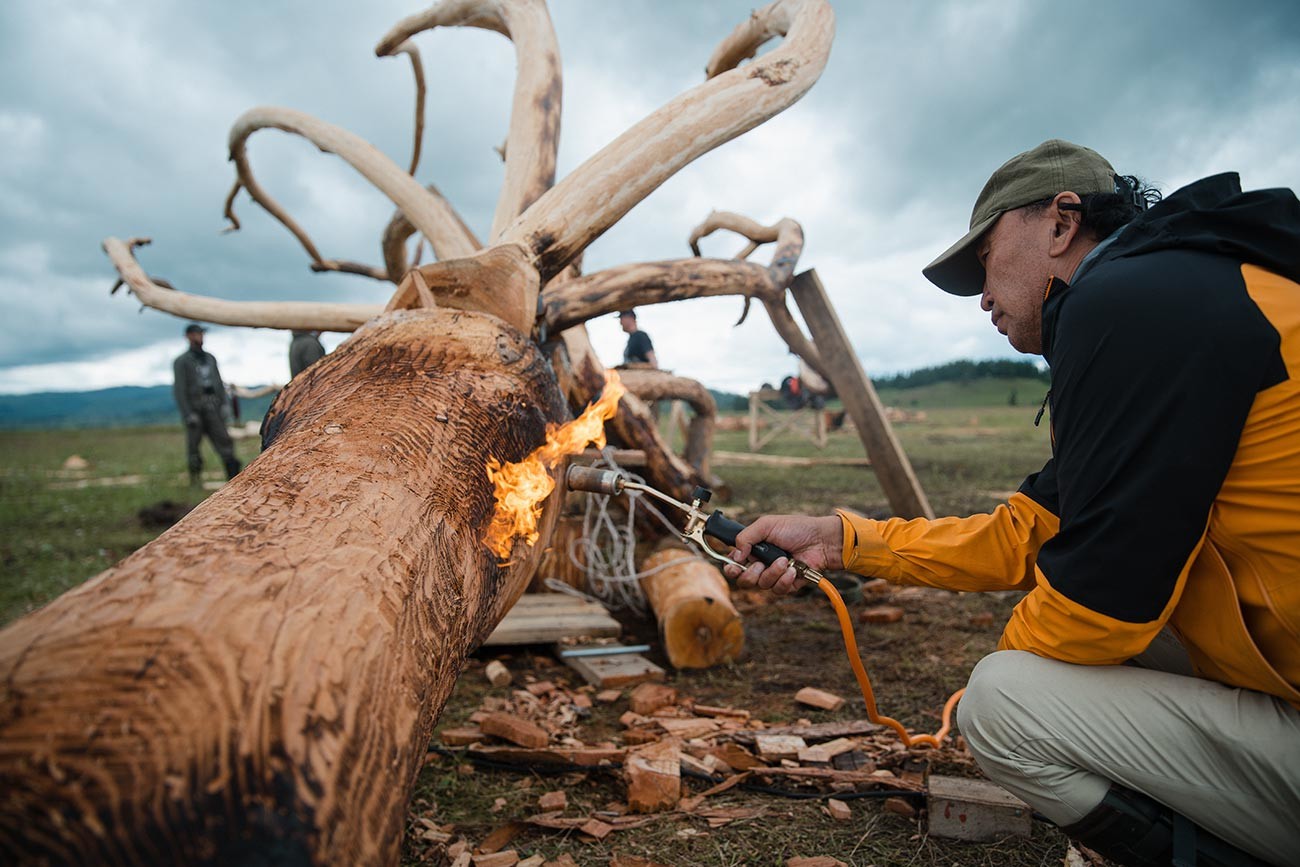
“We would like our grandchildren in 10 years’ time to enjoy coming here, learn to work wood together and speak their native Buryat language,” says Dashi. He explains that by escaping from the metropolis to the taiga, he sought to gain freedom.
Here are some of the works by Dashi Namdakov in Russia and around the world:
1. Transformation, the campus of the Siberian Federal University in Krasnoyarsk
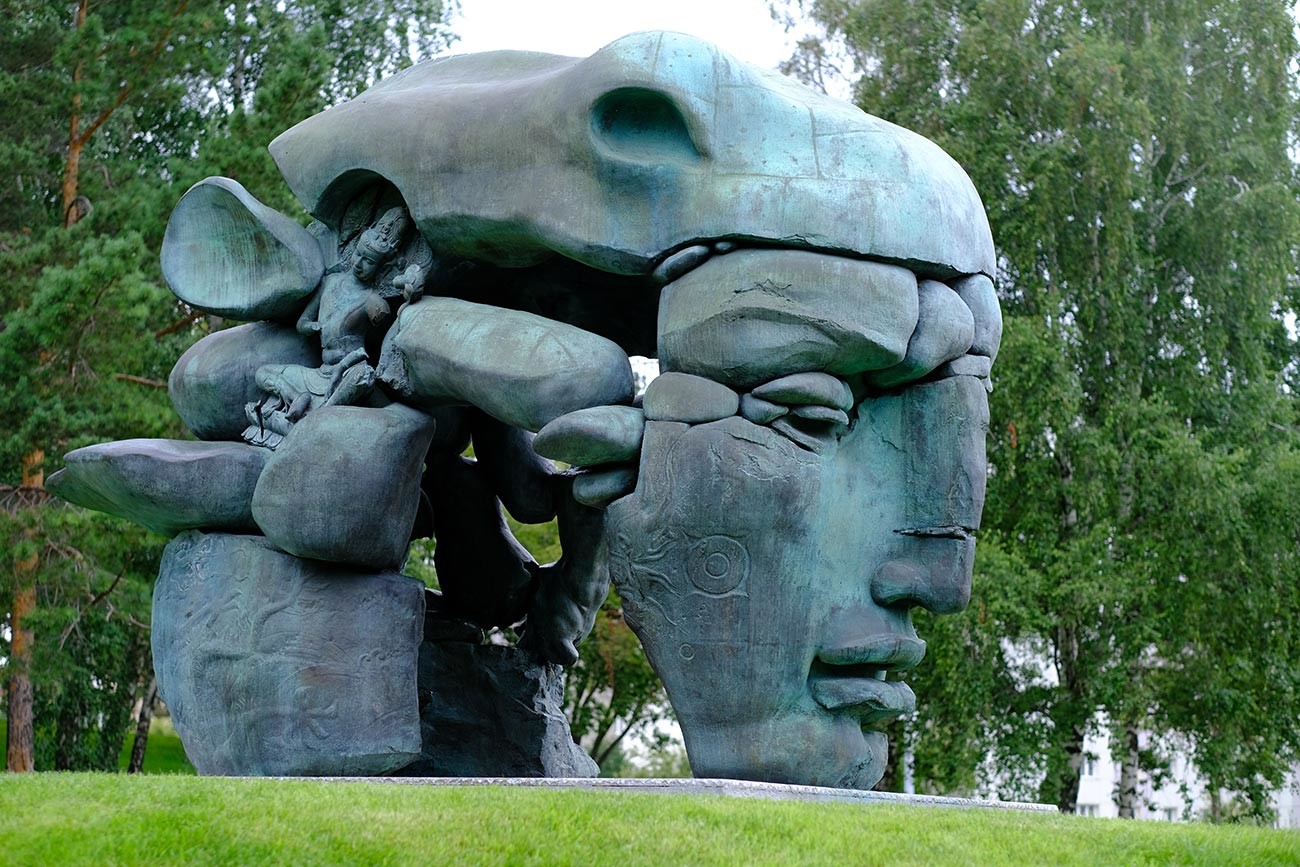
2. Meditation, Les Jardins d'Étretat, Normandy, France
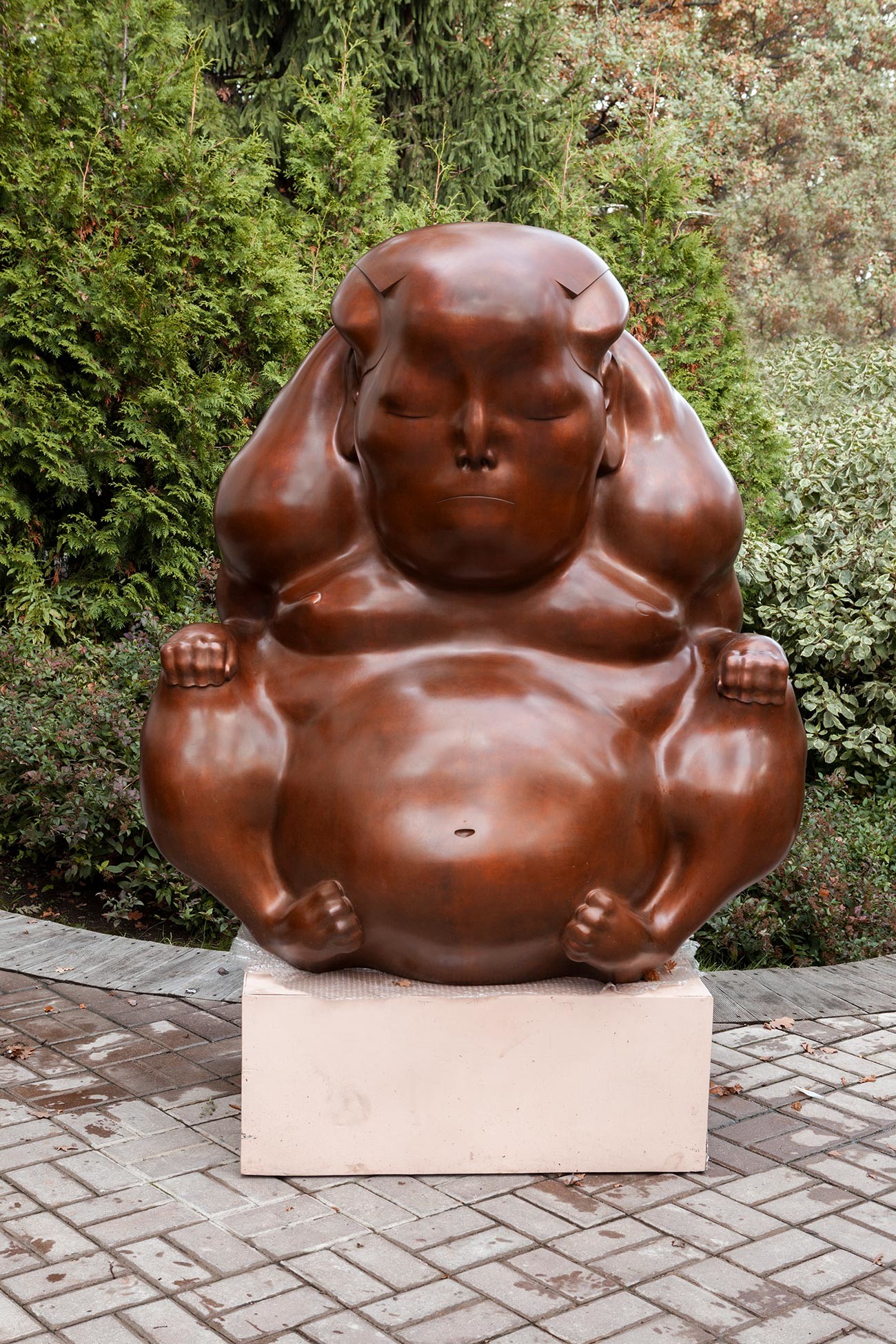
3. Zilants (Winged Serpents), Kazan
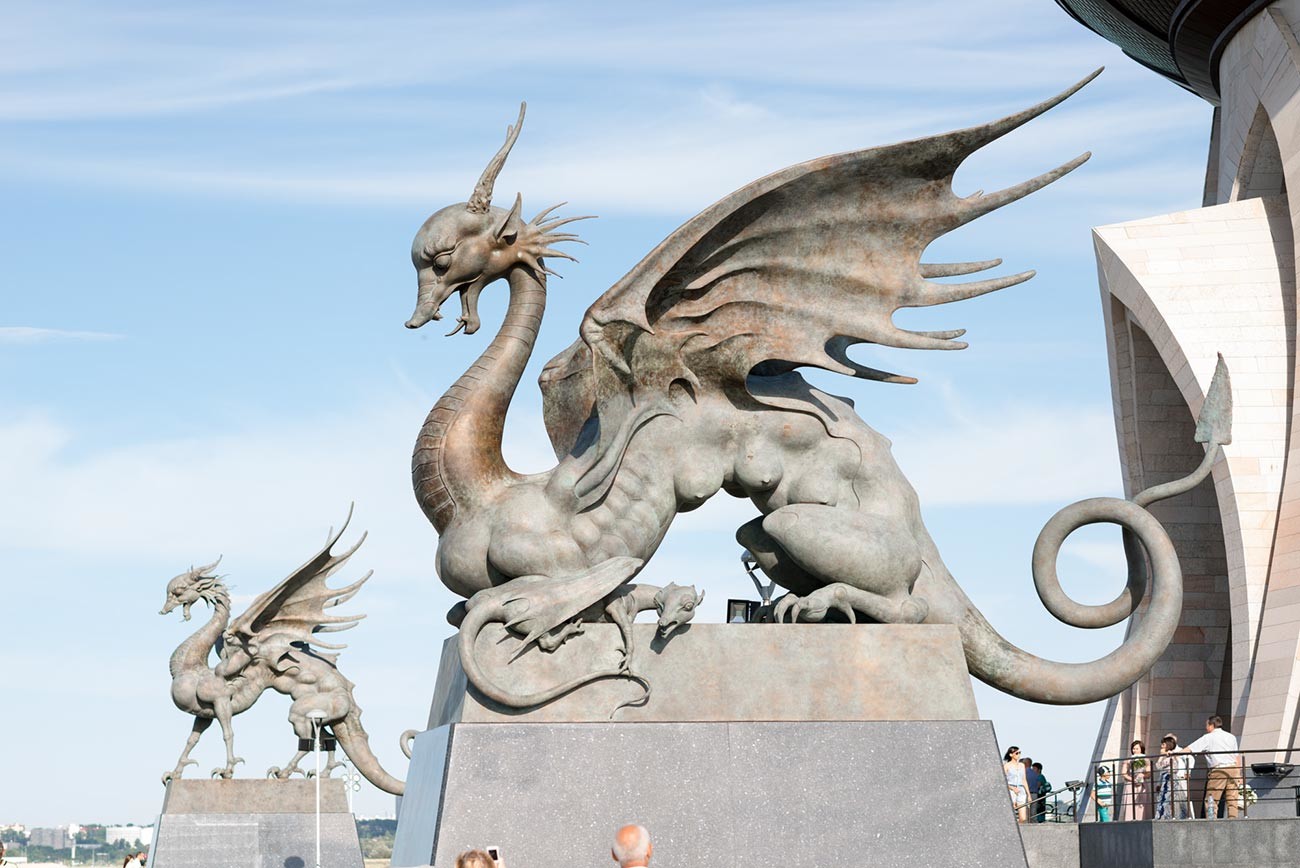
4. She-Guardian, Hyde Park, London (temporary exhibition, 2015)
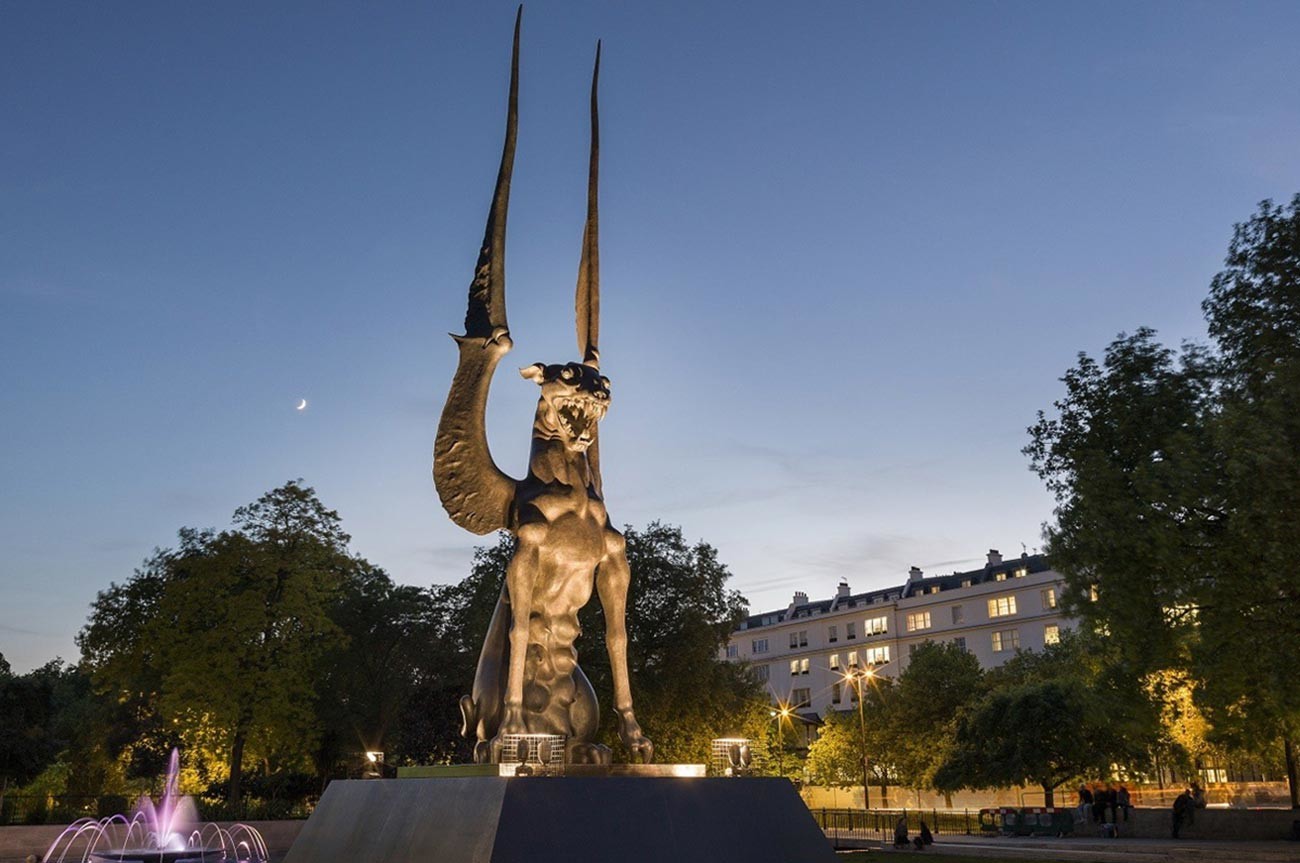
5. Bas-relief in the Russian Armed Forces' main cathedral in Kubinka (a detail)
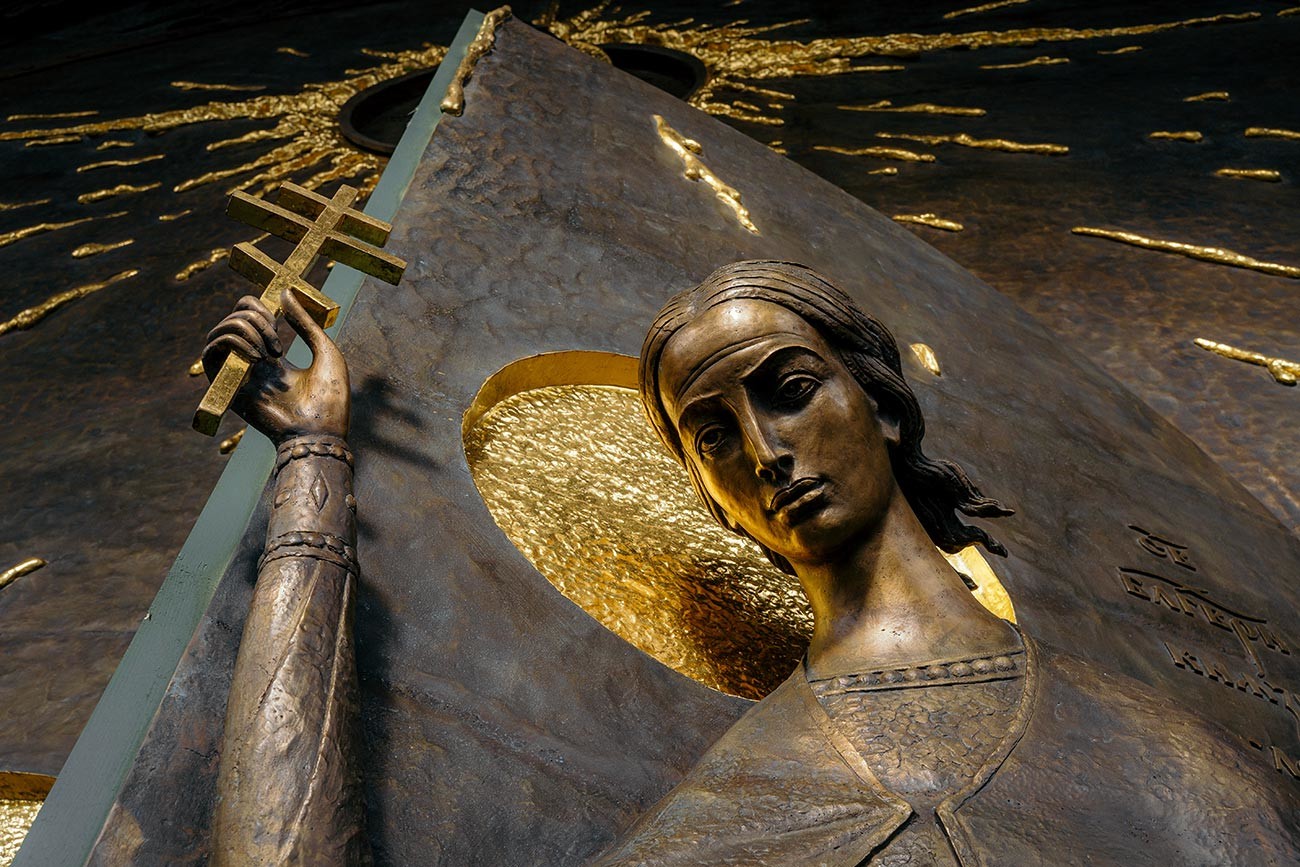
6. The Bird and the Tiger, The Bronstein Gallery, Irkutsk
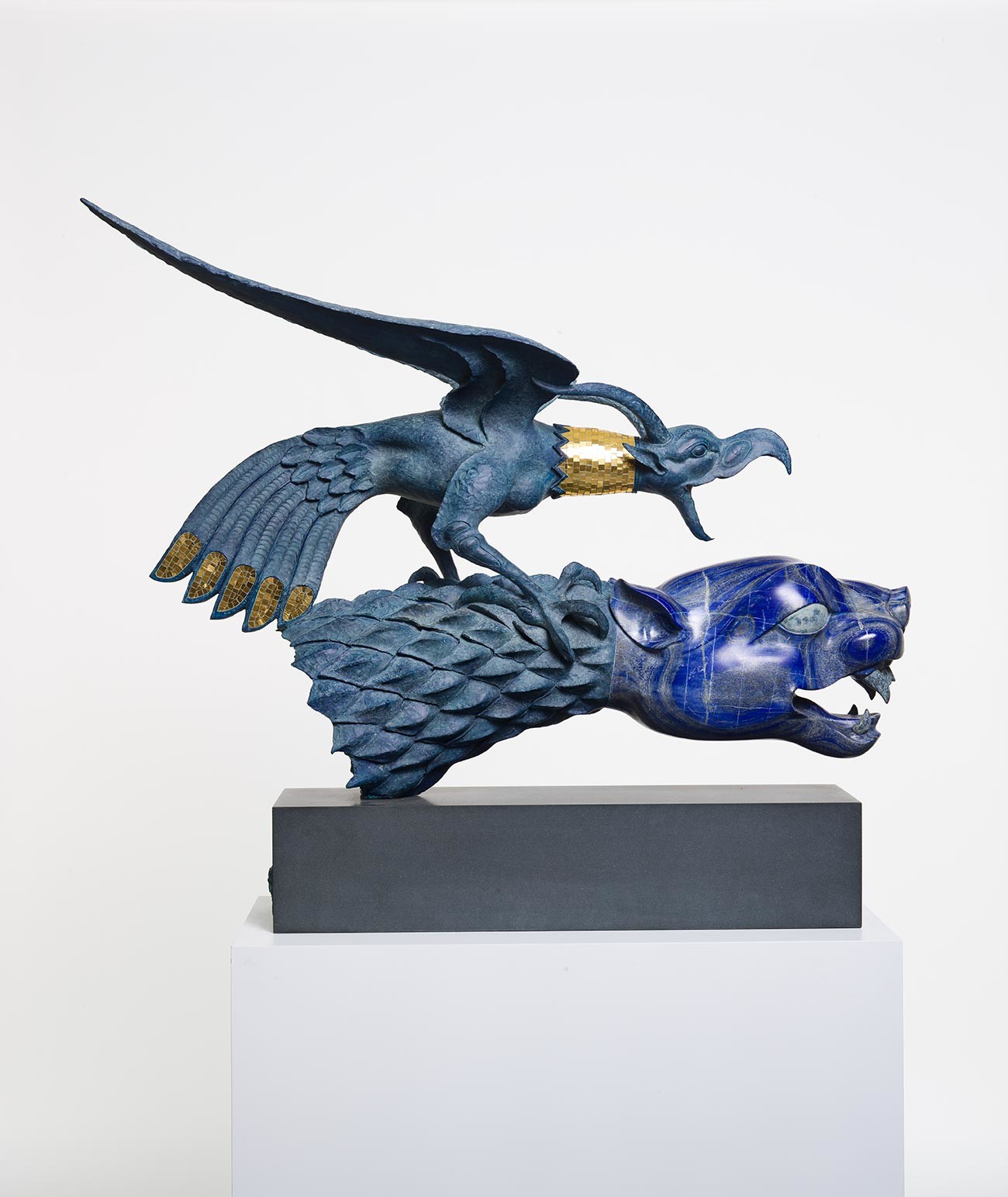
7. Guardian of Baikal, Island of Olkhon, Lake Baikal
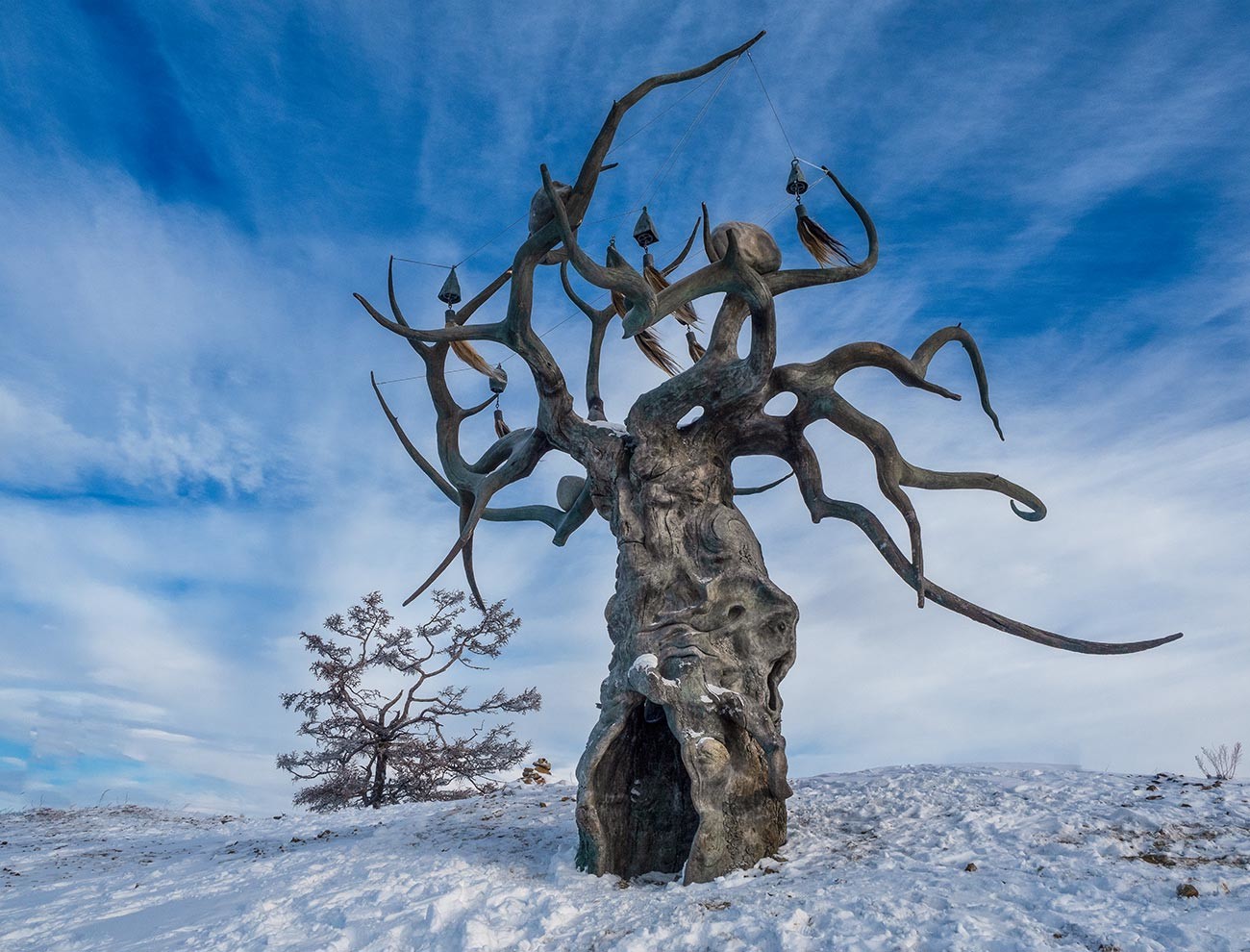
8. Center of Asia, Kyzyl, the Republic of Tyva
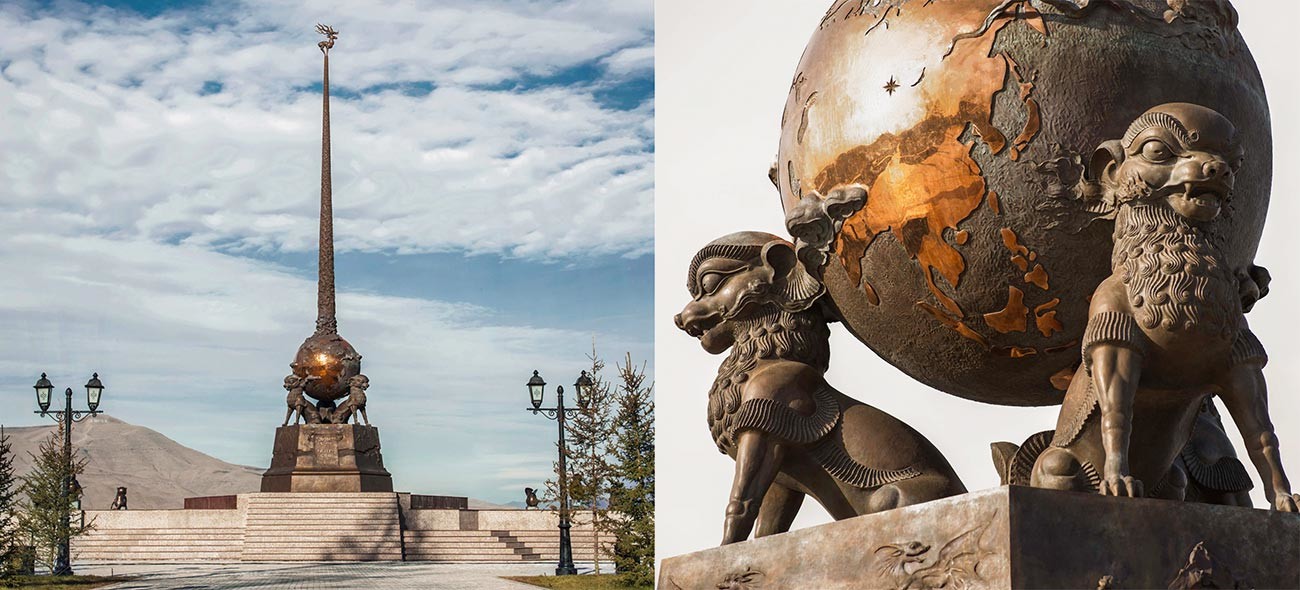
9. Golden Shoria, town of Tashtagol, Kemerovo Region
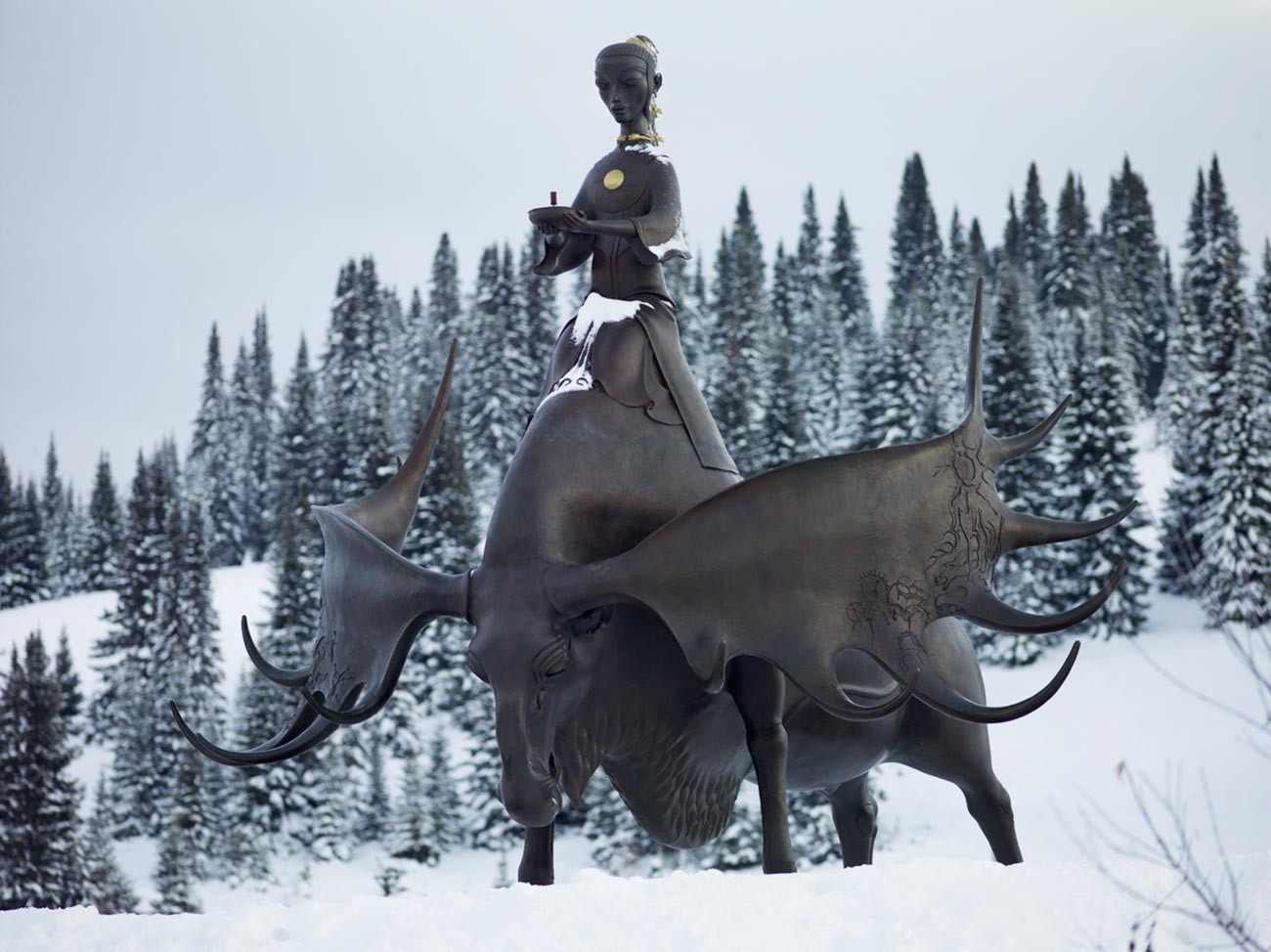
10. Four Friends, settlement of Aginskoye, Transbaikal Territory
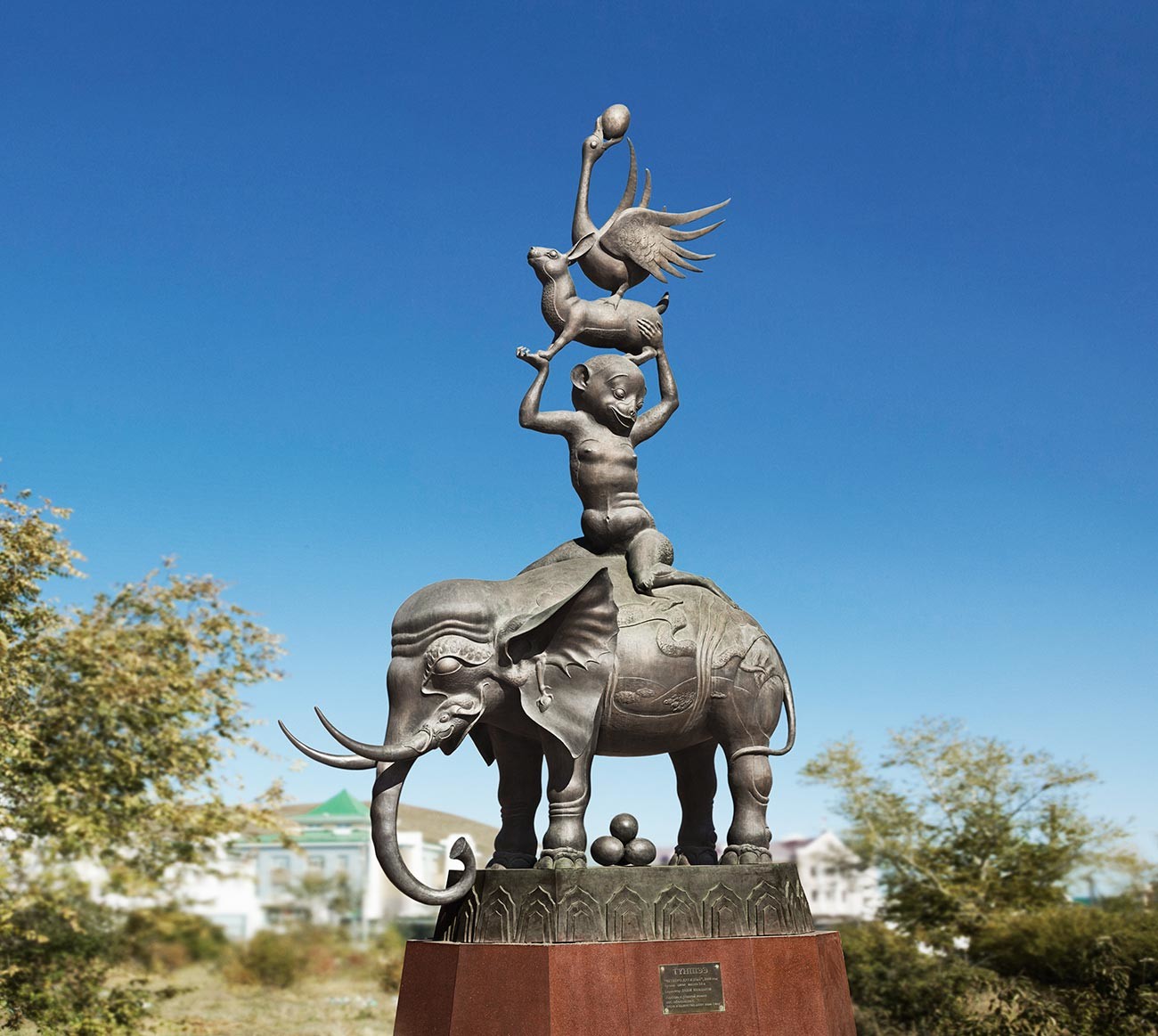
If using any of Russia Beyond's content, partly or in full, always provide an active hyperlink to the original material.
Subscribe
to our newsletter!
Get the week's best stories straight to your inbox